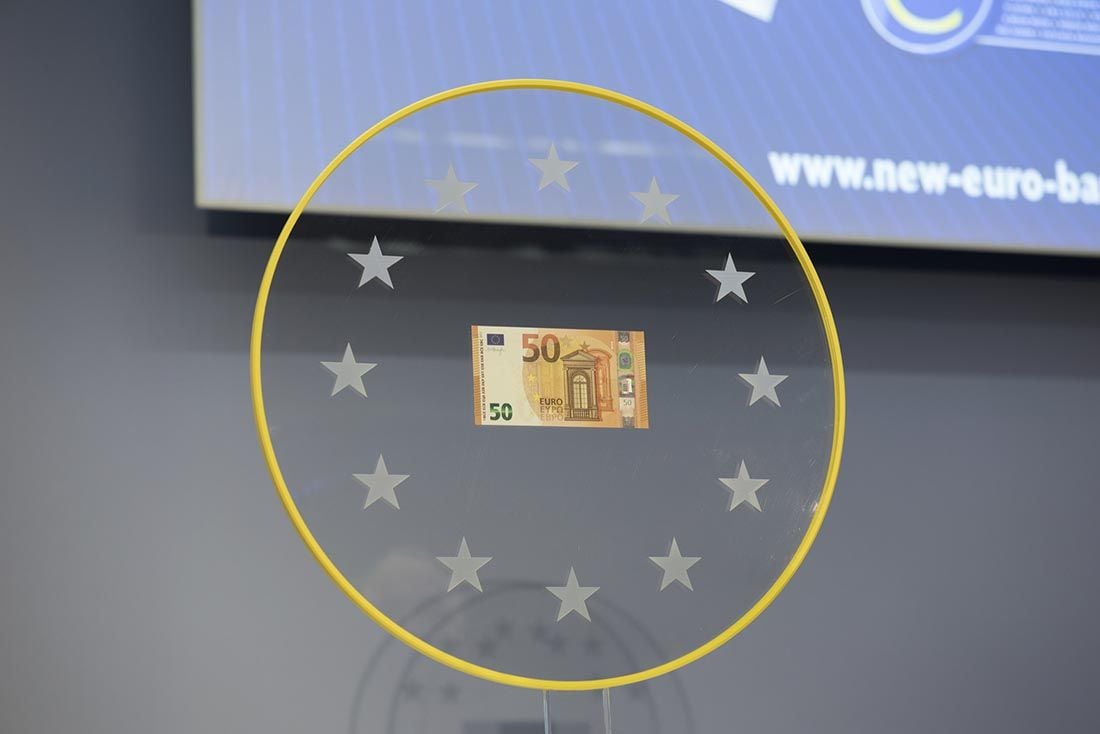Euro Eases Lower after Industrial Data Points to Fresh Slowdown in Third-quarter
- Written by: James Skinner
-
-Eurozone composite PMI falls as services sector weakens in July.
-New order slowdown points to softer economy in third-quarter.
-ECB will warn on outlook for growth and interest rates this week.

© European Central Bank
The Euro eased lower on Tuesday after a series of IHS Markit PMI surveys pointed toward a fresh economic slowdown during the third-quarter, although independent economists remain upbeat in their outlook for growth across the single currency bloc.
IHS Markit's Eurozone manufacturing PMI rose to 55.1 during July, up from 54.9 previously and ahead of the consensus forecast of a decline to 54.7. Meanwhile, the IHS services PMI index slipped from 55.0 to 54.4 when markets had expected a lesser decline to 55.0.
This pushed the Eurozone composite index down to 54.3 from 54.9 in June which, according to IHS Markit, means the eurozone economy may have "lost momentum again" at the start of the third quarter.
"On the basis of past form, the headline output index is broadly consistent with quarterly GDP growth of about 0.4% at the start of Q3. (See Chart.) That is slightly weaker than our (and the ECB’s) forecasts of 0.5% in both Q2 and Q3, but still above the region’s potential growth rate," says Jessica Hinds, a European economist at Capital Economics.
New factory orders fell to their lowest level for nearly two years in July, suggesting a slowdown in actual activity could be in the cards for the months ahead, which was reflected in the monthly measure of business expectations for future activity. This, IHS Markit says, will lead to reduced hiring among manufacturing firms during the weeks ahead.
Meanwhile, in the services sector, current activity growth eased and the rate of new order growth also slowed during the July month. This led to a slower increase in backlogs of uncompleted work, although hiring remained solid in July.
"The declines in both the Composite PMI’s new orders and future output indices in July, to their lowest levels since late 2016, do not bode well for the second half of the year," says Hinds. "On the basis of past form, the headline output index is broadly consistent with quarterly GDP growth of about 0.4% at the start of Q3."
Eurozone GDP growth of 0.4% in the third quarter would be below the European Central Bank forecast of 0.5% growth as well as beneath Capital Economics' own forecast.
The Euro was quoted 0.07% lower at 1.1685 against the Dollar following the release while the Euro-to-Pound rate was down 0.12% at 0.8914. The Euro was lower against all other developed world currencies on Tuesday, barring the Swiss Franc.
"While today’s survey was not quite as positive as we had hoped, it is still consistent with the euro-zone continuing to grow at a decent pace. But with downside risks to the outlook, the ECB is likely to stress later this week that its plans to normalise policy remain contingent on the incoming data and that interest rates are likely to remain on hold at least throughout next summer," Hinds concludes.
Tuesday's data is important for the Euro because of what it might mean for European Central Bank monetary policy. After all, the outlook for Eurozone inflation, which is itself the primary focus of ECB interest rate policy, is hinged largely on the bloc's prospects for economic growth.
The ECB said in June it will continue buying €30 billion of European government bonds each month until the end of September 2018, at which point the rate of monthly purchases will be cut to €15 billion before being reduced to zero at the end of December. This would be the end of the ECB's quantitative easing programme.
However, the bank also quashed earlier hopes among traders that it would be in a position to raise interest rates from their record lows in June 2019, dealing a crushing blow to the single currency and a broad swathe of forecasters who had hoped that an end to the era of ultra-low interest rates was near.
"The Governing Council expects the key ECB interest rates to remain at their present levels at least through the summer of 2019 and in any case for as long as necessary to ensure that the evolution of inflation remains aligned with the current expectations of a sustained adjustment path," the Bank said in its statement.
Changes in interest rates, or hints of them being in the cards, are only made in response to movements in inflation but impact currencies because of the push and pull influence they have on international capital flows and their allure for short-term speculators.
Much like everywhere else in the developed world, with the exception of the US, Eurozone growth slowed markedly during the first-quarter when GDP rose by only 0.4% after a 0.7% increase during the final three months of 2017.
Meanwhile, inflation data has underwhelmed markets of late. While the headline inflation number has risen back to the ECB's 2% target, the more important measure of core inflation fell from 1% to 0.9% in July.
Advertisement
Get up to 5% more foreign exchange by using a specialist provider to get closer to the real market rate and avoid the gaping spreads charged by your bank when providing currency. Learn more here




